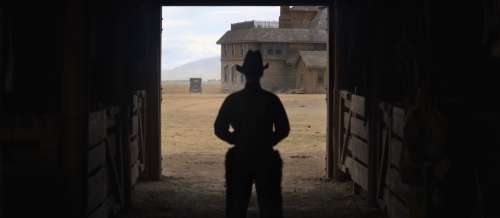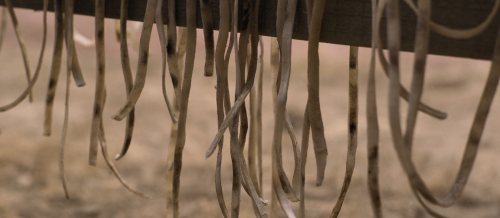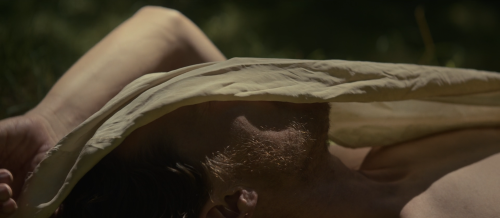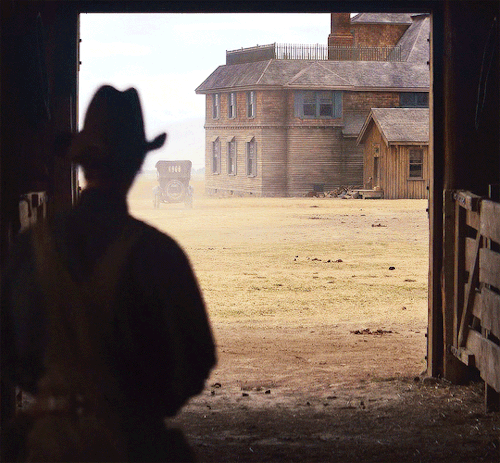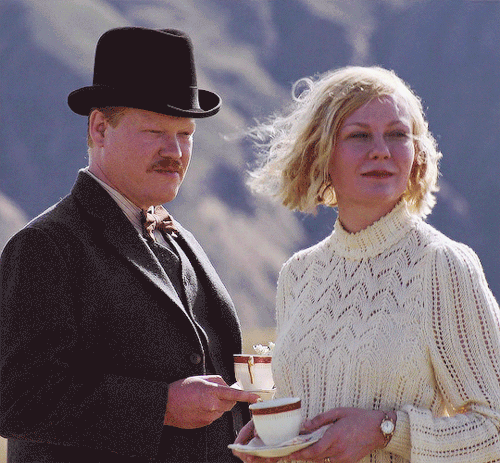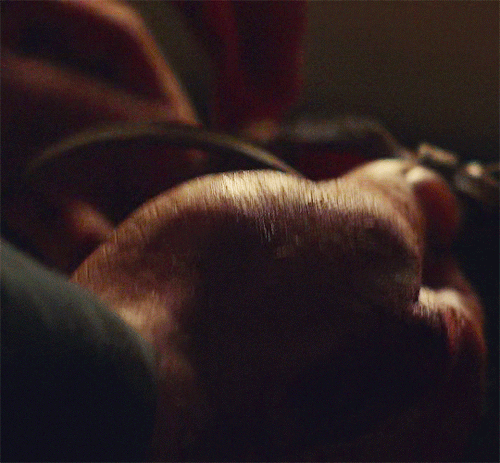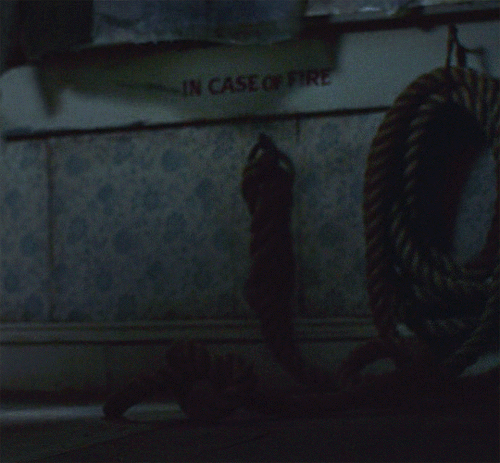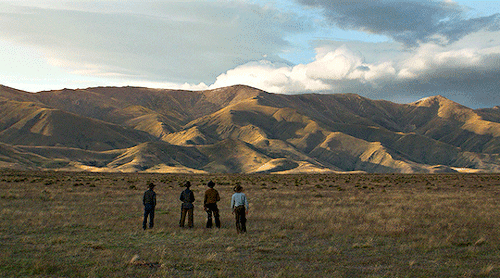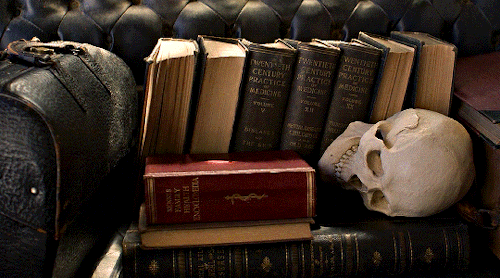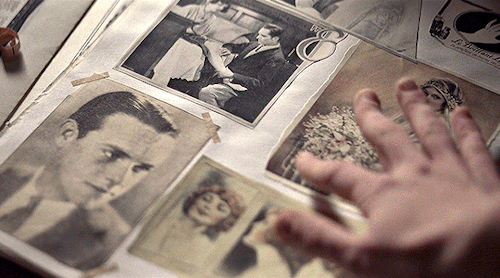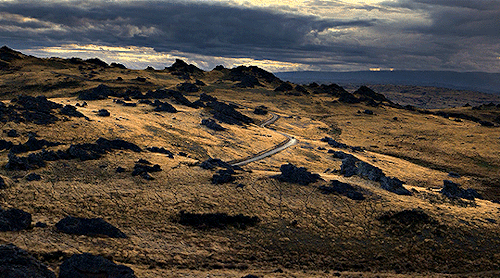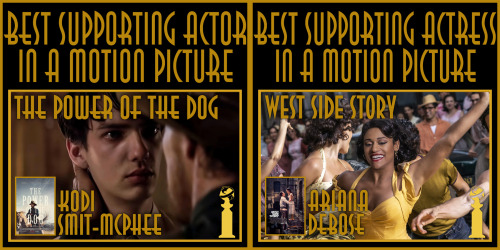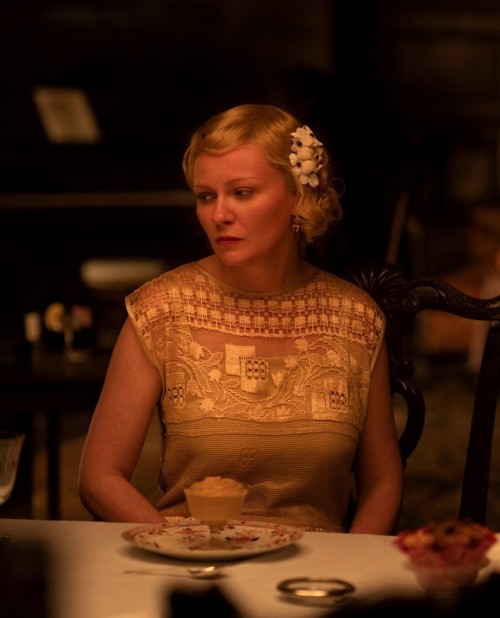#the power of the dog






Benedict Cumberbatch for The New York Times 2021
His eyes are communicating with your soul like he’s your soulmate


Outside he’s a tough macho man
Inside he’s burning with forbidden desire





As for her [Jane Campion] leading man: “We pushed each other along. He was a really great collaborator with high expectations and ideals. Practical skills? Oh my God… he was dazzling.”










The Power of the Dog

The Power of the Dog(12/1)

Wolf(12/3)
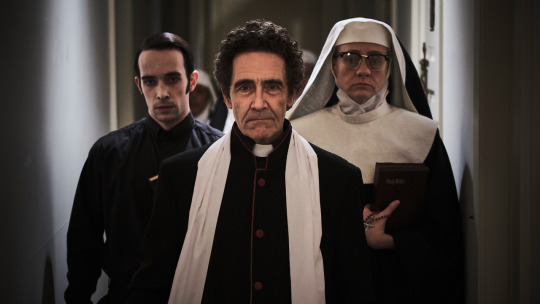
Agnes(12/10)
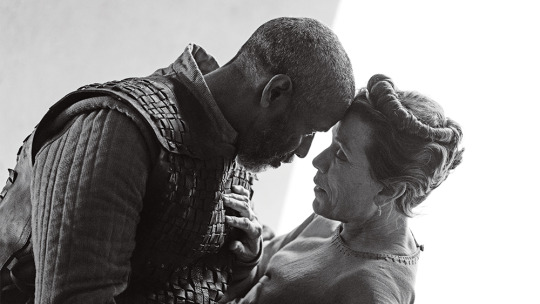
The Tragedy of Macbeth(12/24)

Cyrano(12/31)
GOLDEN GLOBES 2022 - WINNERS
FILM
- BEST PICTURE – DRAMA – The Power of the Dog
- BEST PICTURE – COMEDY OR MUSICAL – West Side Story
- BEST PERFORMANCE BY AN ACTOR IN A MOTION PICTURE – DRAMA – Will Smith - King Richard
- BEST PERFORMANCE BY AN ACTRESS IN A MOTION PICTURE – DRAMA – Nicole Kidman - Being the Ricardos
- BEST PERFORMANCE BY AN ACTOR IN A MOTION PICTURE – COMEDY OR MUSICAL – Andrew Garfield - Tick, Tick… BOOM!
- BEST PERFORMANCE BY AN ACTRESS IN A MOTION PICTURE – COMEDY OR MUSICAL – Rachel Zegler - West Side Story
- BEST PERFORMANCE BY AN ACTOR IN A SUPPORTING ROLE IN A MOTION PICTURE – Kodi Smit-McPhee - The Power of the Dog
- BEST PERFORMANCE BY AN ACTRESS IN A SUPPORTING ROLE IN A MOTION PICTURE – Ariana DeBose - West Side Story
- BEST ANIMATED FILM – Encanto
- BEST DIRECTOR – MOTION PICTURE – Jane Campion - The Power of the Dog
- BEST SCREENPLAY – MOTION PICTURE – Kenneth Branagh - Belfast
- BEST ORIGINAL SCORE – MOTION PICTURE – Dune - Hans Zimmer
- BEST ORIGINAL SONG – MOTION PICTURE – “No Time to Die” - No Time to Die - Billie Eilish & Finneas O’Connell
- BEST MOTION PICTURE FOREIGN LANGUAGE – Drive My Car - Japan
TELEVISION
- BEST TELEVISION SERIES – DRAMA – Succession
- BEST TELEVISION SERIES – COMEDY – Hacks
- BEST TELEVISION LIMITED SERIES OR MOTION PICTURE MADE FOR TELEVISION –The Underground Railroad
- BEST PERFORMANCE BY AN ACTOR IN A TELEVISION SERIES – DRAMA – Jeremy Strong - Sucession
- BEST PERFORMANCE BY AN ACTRESS IN A TELEVISION SERIES – DRAMA – MJ Rodriguez - Pose
- BEST PERFORMANCE BY AN ACTOR IN A TELEVISION SERIES – COMEDY – Jason Sudeikis - Ted Lasso
- BEST PERFORMANCE BY AN ACTRESS IN A TELEVISION SERIES – COMEDY - Jean Smart - Hacks
- BEST PERFORMANCE BY AN ACTOR IN A LIMITED SERIES OR MOTION PICTURE MADE FOR TELEVISION – Michael Keaton - Dopesick
- BEST PERFORMANCE BY AN ACTRESS IN A LIMITED SERIES OR MOTION PICTURE MADE FOR TELEVISION – Kate Winslet - Mare of Easttown
- BEST PERFORMANCE BY AN ACTOR IN A SUPPORTING ROLE IN A SERIES, LIMITED SERIES OR MOTION PICTURE MADE FOR TELEVISION – O Yeong-Su - Squid Game
- BEST PERFORMANCE BY AN ACTRESS IN A SUPPORTING ROLE IN A SERIES, LIMITED SERIES OR MOTION PICTURE MADE FOR TELEVISION – Sarah Snook - Succession
Post link





Benedict Cumberbatch Didn’t Clean Himself For Several Months | The Graham Norton Show(X)
There are people who really want to know what Benedict smells like… yeah sorry Benedict but



Give Benedict Cumberbatch an Oscar





Phil
I get an inordinate number of asks and messages about intentionality of Kishimoto writing a gay love story with Naruto and Shippuden (and it’s there in Boruto as well) and quite a lot of them think of it as being unintentional or accidental since it is not made explicit in the story itself.
Now I have talked several times about how media portrays different aspects of homosexuality and gay coming of age stories and the tropes they use, and a lot of these films share similar tropes and ideas to portray homosexuality and the struggles the characters face in order to come to terms with it. A lot of times, they are oblivious or closeted, and refuse to come out or even acknowledge that they might be gay. A lot of socio cultural and political factors are associated with portrayals of homosexuality given it is still quite a taboo subject in many countries and cultures and so the mode of telling these stories can be implicit and layered, and can only be understood with a keen eye of narrative and visual language.
Naruto fandom is not very given to critical thinking and the catch 22 situation that Kishi creates due to the fact that shounen as a genre cannot depict homosexuality especially with its main characters and yet he wrote a gay love story about them, befuddles a lot of readers, and they become motivated to ignore the actual narrative and characterization while they keep sticking to shounen guidelines and refuse to budge from it. So they ignore the story and narrative itself and insist that it cannot be possible, that it has to be an elaborate bait.
I have disproved that also in some of my posts, but in this one, I am going to talk about how it’s not that uncommon in media to tell a story about a stigmatized subject like homosexuality without making it explicit or overt, but by using subtle imagery and clever writing. And Kishi is definitely a master of subterfuge and intrigue. However, one doesn’t have to kill a lot of brain cells in order to find the real intent behind his work, the only thing that stops readers from seeing it’s gay text, subtext and nuances is heteronomativity, and a lack of insight into narrative and visual language.
How do you judge media? By paying attention to the context, the visual information, the text or dialogues, special effects if any, sound effects, editing, and characterisation that further propels the reader to extract the meaning from a panel or a scene.
Take this scene for example.
Naruto has just come back from team seven’s reunion where he, as he feels, again failed to bring Sasuke back, or what he thinks is, he failed to free Sasuke from the clutches of the villian, Orochimaru who will soon claim Sasuke’s body. So here he is sitting and thinking plainatively and longingly about Sasuke.

Look at the first panel. What does it tell you? It is a wide shot, and Naruto is sitting alone, with the backdrop of the city landscape with no other person in it, lost in his own thoughts. Wide shots are generally used to establish space, scale and the position of the character in it with respect to the rest of the frame. This panel gives the impression that he is solitary and melancholy, given his stooping and dejected shoulders. As if he is feeling helpless. Cut to next panel, a close profile shot where we are able to substantiate the preceding panel with a clearly depressed expression on Naruto’s face. So our understanding of the first panel is even more solidified with the succeeding one. The next panel is even a closer one. Close up shots of faces are used to depict expressions and to capture the emotions of the characters, so that there’s no ambiguity in the reader’s mind as to how the character is feeling. Naruto is thinking about his meeting with Sasuke gone wrong. Couple panels later, we see a close frontal shot of Naruto and we clearly see that Naruto is depressed, the dark circles under his eyes scream that he is suffering. Other characters are also drawn with dark circles when they are needed to be shown as experiencing similar emotions. And finally, we see him in the centre of a wide shot with his back to camera, which emphasizes his sense of loneliness even more as he longingly says Sasuke…but we don’t get to see his face as he says it, which indicates at partial obfuscation. We only see his drooping and defeated body language. This is a very romantic trope, where usually the hero or heroine is pining away in separation thinking about their beloved.

Cut to next page. We see Sakura and Sai have come to meet up with Naruto. And see how his body language changes. From dejected and droopy, to upright and bold, with his hands behind his back. Does this complement the dialogue and context? Very much so. He clearly lies to them and tells Sakura that he was thinking about a date with her when he was clearly thinking about Sasuke. What does this say to the audience? That he does not feel comfortable or safe to reveal what he was really thinking about, he is unable to show his vulnerability to Sakura and Sai. So his body language also changes accordingly, his holding his hands at the back of his neck also depicts his nervousness. Now why would he be nervous about telling them about what he was thinking? They were also at the reunion and they saw a very emotional Naruto, so why would Naruto feel like he couldn’t tell them? And why would he feel the need to lie about it, covering it up with something distinctly heterosexual? This is typical closeted gay behaviour. Denial to oneself and overcompensating to hide it from others.
This is how visual language and narrative works. It doesn’t have to be overt, or explicit. But the meaning can still be gleaned if only we look at it with a keen eye and critical understanding. And even if you weren’t inclined towards doing a panel by panel analysis, it doesn’t matter. Because the meaning works subliminally, and so you don’t need this analysis to get it. That’s the power of visual language. Our understanding of media is only as good as our understanding of the world and our insights into our own selves. If you want to learn more about it, I suggest reading a pioneering book about visual language and meaning called ‘Ways of Seeing’ by John Berger. A quote from it - “We never look at just the one thing, we are always looking at the relation between things and ourselves.”
I recently saw this film called The Power of the Dog, a Netflix film, directed by one of the most celebrated film makers alive, Jane Campion, I have seen her work before and she is mesmerizing. I have certainly liked her other films better than this one, but that’s not what I am here to talk about. The Power of the Dog is still an effective film, it’s based on a book of the same name written by Thomas Savage, an American author, the same writer that inspired Annie Proulx, writer of the short story on which the film 'Brokeback Mountain’ is based, same name.

The Power of the Dog is a western, with cowboys and horses and bulls and a farm, but it’s not your typical western film, like 'The good the bad and the ugly’ or 'Once upon a time in the west’. It’s a psychological drama.
The protagonist is called Peter who is a teenaged boy, a homosexual, but it’s not said or shown anywhere explicitly. He is opposite another main character Phil, played by Benedict Cumberbatch, an unmarried cowboy, replete with his pride and toxic masculinity but has his own vulnerabilities and insecurities stemming from his situation as a closeted gay man, as in, he knows he is gay, but hasn’t come out, since this story is set up in 1925 Montana, USA, when homosexuality was considered a criminal act in North America. However the film is not overtly political. The drama is drawn out from interpersonal dynamics between different characters.
Anyway, Jane is a very experienced film maker and is nuanced in her characterisations and visual imagery. And I was quite surprised to see that she chose to depict homosexuality implicitly. Even though she wouldn’t have faced any restrictions about making it explicit, she chose to keep it implicit and indirect, which was a directorial decision and instinct. But my point is, it’s possible to do it, people have done it, and the meaning of it can still be gleaned, without calling it unintentional or accidental. Most viewers and readers expect to be spoonfed about the story and visuals, but individualistic and talented creators choose to not follow the cookie cutter mould and device their own ways of telling stories. It’s their job, they are storytellers. I think the reason she tells this story implicitly is because otherwise, she would have run the risk of making it political, whereas she only wanted to show the psychological and interpersonal aspects of it, which does make this story more personal, keeping it in the spirit of the original source, since the novel it is based on is semi-autobiographical.
So we see a character like Phil, who is closeted gay but it’s only revealed slowly and gradually as the viewer pieces certain snippets of information gleaned from visuals and understated dialogues. Like this scene here.


What is this visual reminiscent of, what does this imagery suggest? Look at the frame and the colours and the action happening in this shot. Touching a paper flower crafted in a way that reminds one of a certain body part and a certain act that involves that body part. Keep in mind, Phil is brash, cruel, and closeted, depicted as a man’s man, an alpha man, who will castrate a bull with his bare hands. The flowers are made by Peter, the delicate and sensitive looking homosexual boy, and the moment Phil lays his eyes on him, he becomes especially aggressive and taunting, calling Peter names such as sissy boy. What does that suggest? Who is called a sissy boy? We see more of what motivates Phil, who keeps talking about a man called Bronco Henry, whom he considers his great friend and teacher. A private man, Phil often goes to a desolate part of the neighbouring mountain, where he doesn’t allow anyone else to accompany him, and we see him undressing slowly, and then we see this.




He brings out a handkerchief from his pocket tenderly and longingly, while being completely alone, and proceeds to run the piece of cloth all over his body in this sensual manner, with his eyes closed, like he is imagining a lover touching him. It is revealed that the handkerchief belongs to Bronco Henry as we see the initials on the cloth, and so we subliminally add more to our knowledge about this private, tortured man. And then he proceeds to masturbate. So we get to see a private, very vulnerable moment in which Phil is not the toxic male, but just a bereft lover, who is pining for his love and making do with what he is left with.
No dialogues, nothing explicitly shown, but by this time, we Know that not only Phil is closeted gay, he is in love with Bronco Henry (dead at the time), and perhaps sees something in Peter that makes him feel extremely reactive. Like he feels insecure in his masculinity, like his facade of strength and manliness is somehow compromised by Peter’s existence. But it’s not that simple.
Throughout the first half of the film, we see Phil taunting Peter and Peter’s mother who is his sister in law, whom he resents deeply, (because he thinks she found her meal ticket when she got married to his brother), but something happens, and Phil becomes softer towards Peter, as he sees something in Peter that reminds him of Bronco. And this is where the power equation starts to shift.
Now I don’t want to go into the rest of the story, but I will leave a link to this video, where Jane has talked about this homoerotic scene in particular, which she designed and constructed mindfully, keeping the pace and mood and meaning of the narrative. She added several elements to make it feel erotic, the setting which is in a barn with just the two of them, as in Phil and Peter, Bronco Henry’s saddle, low lighting but warm and earthy colours, minimal dialogues, intimate actions, without being explicit about any of it. Like this scene here.

Peter rolls a cigarette, smokes it himself and then places it gently between Phil’s lips so he could also smoke, since his hands are occupied making a rope, as he is showing the process to Peter. Now, nothing is said explicitly, but there is a certain sexual tension here, emphasized by the cigarette, a phallic symbol, and the moment Phil accepts the cigarette, puffing at his lips as we see him in that tight (close) shot, the power balance shifts in Peter’s favor. I won’t give the rest of the story away because it does function on an element of surprise. Jane also uses numerous visuals of horses in this film, very strategically placed, since horses/stallions depict raw sensual power, grace and stamina. It’s also considered sexual. The image limit is over so I can’t attach more pictures.
I would also like to mention that Thomas Savage, the author of the novel, had several close and intimate relationships with men, even though he married a woman, another author, quite early on in his life and had two children with her. His wife knew about his sexuality before they got married. But he insisted to be identified as gay, not bisexual. He came out later in his life.
Anyway, the point I am making is that it is quite common in media to use one’s storytelling tools to not make it so obvious, some creators will choose to make you work for it, they wouldn’t want to spoonfeed you, they wouldn’t want to follow the beaten path, they would device methods and ways to tell a story with their own creative brand, that’s where their talent lies. And Kishi is talented and creative, that much we know.
People in this industry aren’t idiots, like Naruto fandom likes to believe. They know what they are doing, they understand it way better than you do, they make a living out of it. They know how to manipulate your eyes and mind, they know how to read you, they know how to construct a language and narrative to affect you to such a great extent. They know how to create a certain emotion in you, they know how shots are to be compiled and edited to have the maximum impact on audience. I wish the naysayers in this fandom knew how stories were written and depicted. I wish they knew how much effort and thought is required to make something as impactful as Naruto.
I am aware that many fans in this fandom refuse to believe that Naruto and Sasuke are gay, and they would say ignorant shit like Kishi is baiting the audience, Sasuke isn’t gay, Sasuke slept with Karin, Naruto is straight because he likes to peek in bathhouses, or whatever, selectively viewing content without even attempting to look at so many other indicators, and anything that doesn’t fit their own vision will be glossed over as a bait or accident. Which is clearly denial and an incompetence at interpreting media.
If you don’t understand something, the right thing to do would be to find out more about it rather than spouting ignorance, and abusing those who understand media better. There are so many of them like that, and some of them are also very popular, which goes to show Naruto fandom will believe anything as long as it supports their heteronormative, homophobic and less than intelligent lenses through which they see things, without even attempting to consider an alternative understanding.
I for one, am quite secure in my understanding. So you can keep sending me annoying asks, but know that it is not really bothering me. All I care about is that people respect and attempt to understand media, and give it credit, give the creators some credit, you don’t know better than them. And when you deny that, it is just hilarious, and I can only chuckle at your expense.
I summarized the totality of all the comments I’ve seen across various platforms and they all said it’s a “slow burn” film. The first thing I noticed is the crossover of Mary Jane and the name Peter in the film lmao. Actually, you’ll realize that the film’s plot was just mundane but how did they make it spectacular and unforgettable. The runs in this film were in zigzag till the ending hit the vortex or something. The setting was excellent at the same time boring. So many dead air but those are the so called worth it silence. The music was — wait I forgot to search the one they played with the banjo and piano(?) I have to add that song in Spotify playlist right now lol. Ykw, the comment that hurt me the most is that Kodi and Jesses didn’t deserve their oscar nominations, bruh they do! I love you Mr. CUMberbatch though you love Bronco Henry that much — oops I love what I saw in the film jk. The little romance, lgbt theme, betrayal in the end and the surprise have me died. Thank you for that huh Overall, this is an amazing movie that not everyone can enjoy, but I did…. sleep, jk. I really did enjoy it!
The Power of the Dog (2021)




